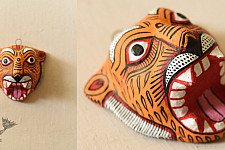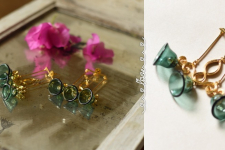- Availability: 1
- Made & Mkt by: Jawaja Durrie Association
- Product Code: 3748-JA-17
- Weight: 1.00kg
- Dimensions: 26.00in x 26.00in x 0.00in
The typical dispatch time is 2-3 days; however, in special cases, it may take longer. Please refer to the product details section for specific timelines. Once dispatched, we will share the tracking details with you.
For returns, you can file a request within 24 hours of receiving the product. If the package is damaged, please make a video while unboxing and share images of the damaged item along with your return request.
9328006304 ( WhatsApp )

Probably the lesser known offspring of Artisans’ Alliance, Jawaja, the durries of Beawar, Rajasthan, are no less than the leather craft of this 35 year old association. Durrie, the Indian counterpart of the carpet, is a non-pile rug that has its own unique colours, patterns and materials in different regions across the country. Just a few kilometers from Beawar, is the village of Beawar-Khas, where weavers of the Jawaja association make the characteristic thick and bright durries on their looms at home.

Weaving has been a traditional profession of the people of this village; craftsmen used to weave clothing fabric for local use. As attractive and cheaper synthetic fabrics started replacing the local handloom ones, the weavers needed another source of income, with the skills they had. With the formation of the association, they learnt how to make durries, which would be more profitable and have a wider reach.

Jawaja durries are typically thicker then other rugs, with the use of strong and thicker yarns for weaving. Craftsmen source cotton, wool and jute yarns from the nearby town of Beawar and prepare the warp and bobbins at home. While bobbins are wound with a Charkha, the loom does not consume any electricity either. Once on the loom, an average sized durrie of about 4’ x 6’ may take two to three days for completion.

The characteristic striped and geometric patterns are part of the emergence and evolution of this craft. Flaming oranges and magenta translated on to durries, from their own odhanis and turbans, bright blues and greens, to counter the lack of it in the surroundings, and subtle harmonies of warm greys of undyed wool are all found in these durries. Wool carpets to keep warm in the biting cold winter of the north, comfortable cotton for the humid south and jute for strength, each material is woven, sometimes mixed, can spoil everyone for choice.

Although the lure of city jobs takes youngsters away from traditional crafts, weavers who once provided for local needs, now send their beautiful hand-woven creations to decorate homes all over the world.
| Craftsmen | |
| Made by | Jawaja Artisans Alliance, Weavers association |
| City | Beawar |
| Material | |
| Made of | Sheep wool and cotton |
| Instruction | |
| Note | The products in this category is handmade. These might slightly differ from as seen on digital screen. |



















-225x150w.jpg)
-225x150w.jpg)
-225x150w.jpg)
-225x150w.jpg)
-225x150w.jpg)
-225x150w.jpg)
-225x150w.jpg)
-225x150w.jpg)
-225x150w.jpg)
-225x150w.jpg)
-225x150w.jpg)
-225x150w.jpg)



-225x150w.jpg)





-225x150w.jpg)
/06_05_2024/Padmapriya-Handwoven-Chanderi-Silk-Black-Saree-With-Red-Border-225x150h.jpg)
/06_05_2024/19-(2)-225x150w.jpg)

-225x150h.jpg)









-225x150w.jpg)

-225x150w.jpg)

-225x150w.jpg)

